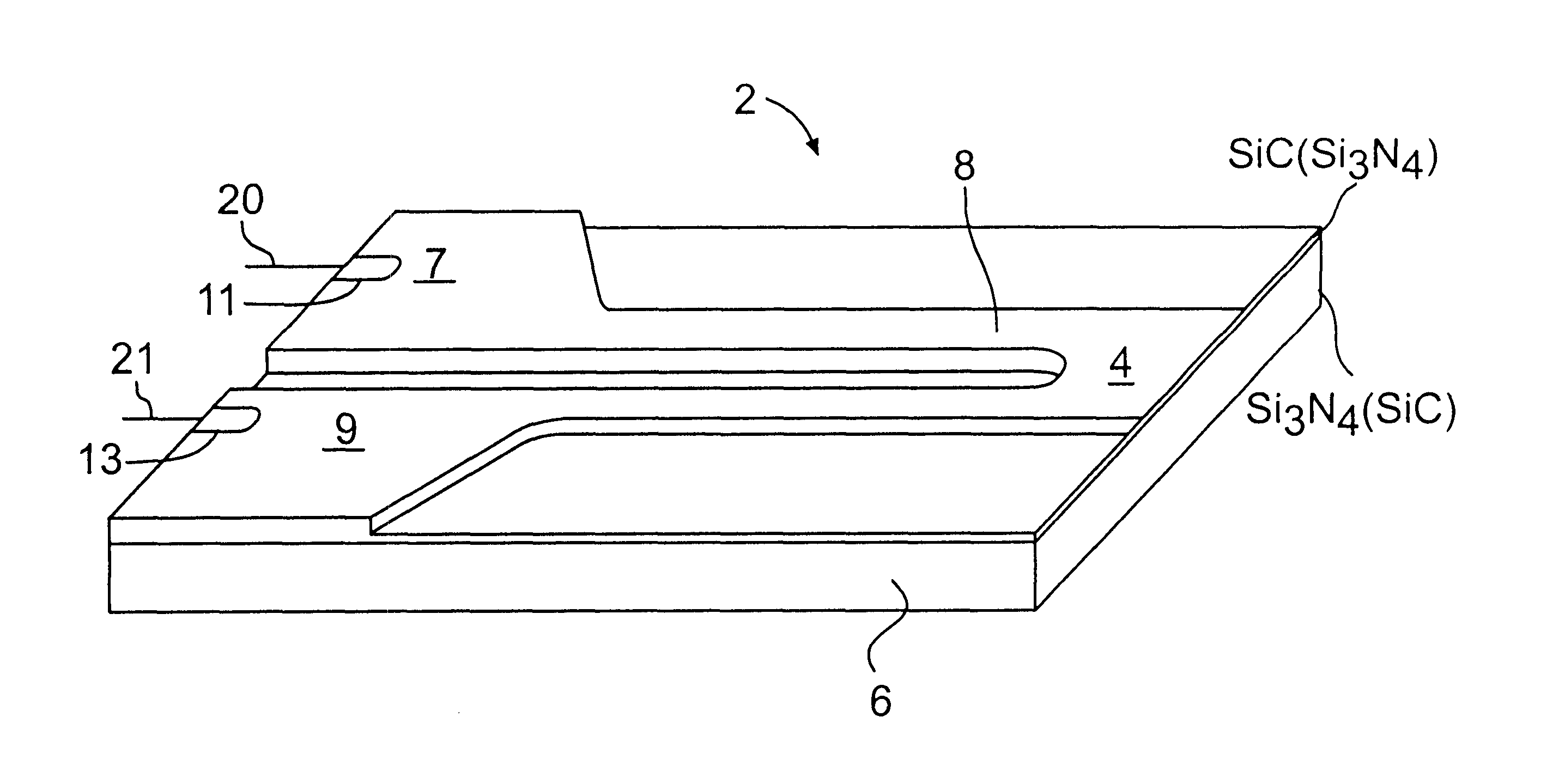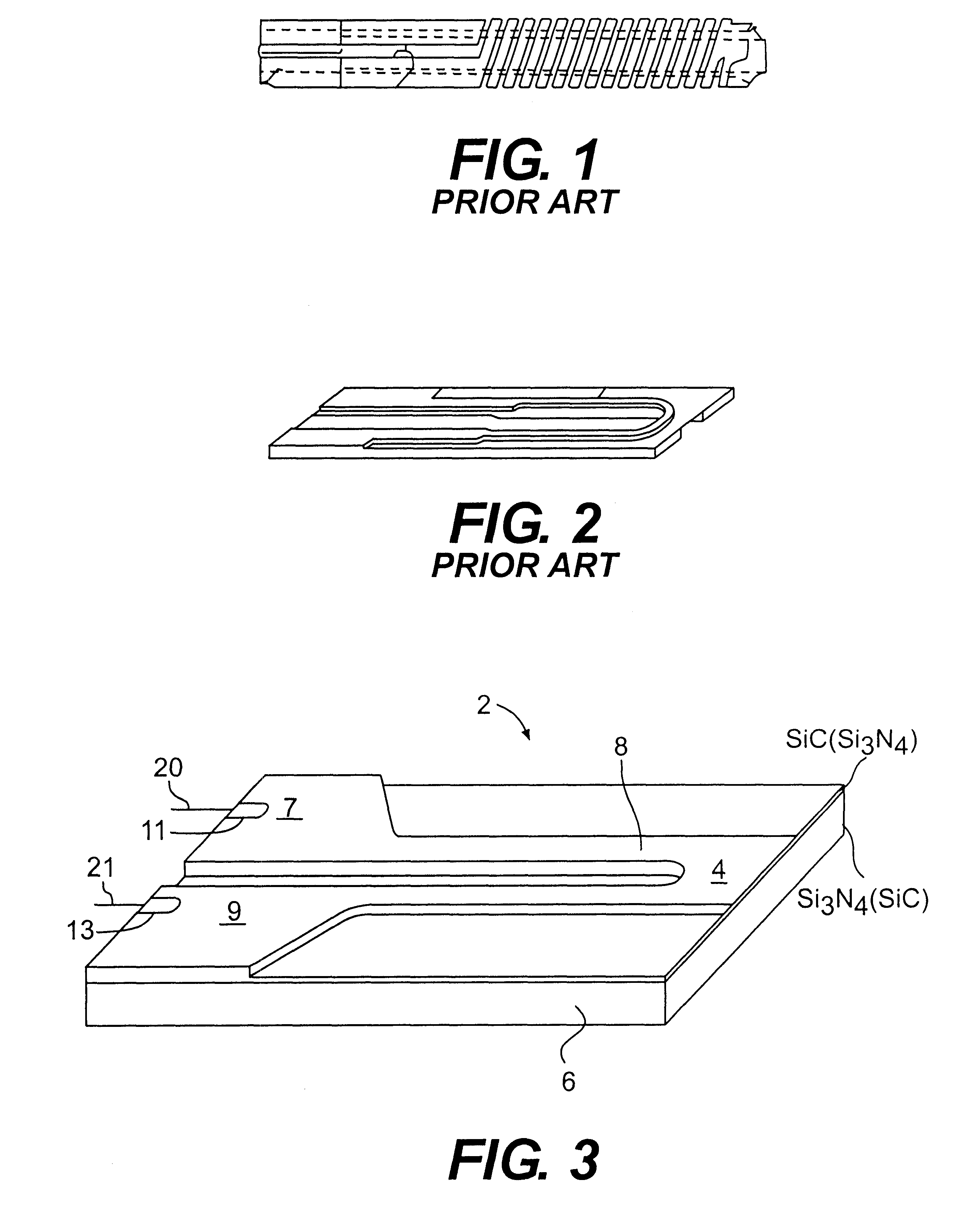Composite monolithic elements and methods for making such elements
a monolithic element and composite technology, applied in the field of composite monolithic elements and methods for making such elements, can solve the problems of low yield in the manufacturing process, relative fragility, and high cost of materials,
- Summary
- Abstract
- Description
- Claims
- Application Information
AI Technical Summary
Benefits of technology
Problems solved by technology
Method used
Image
Examples
first embodiment
A composite monolithic heating element or igniter 2 in accordance with the invention is shown in FIG. 3. As illustrated, the igniter 2 includes a first region or layer 4 which has a first specific property. For example, in this embodiment of the invention, the first region or layer 4 act as a conductor or hot portion of the igniter 2. The igniter 2 also includes a second region or layer 6 which has a second specific property which is different than the specific property of the first layer 4. For example, the second layer 6 may act as an insulator and at the same time provides a physical support for the conductive layer 4.
An important feature of the present invention resides in the bonding together of the first and second layers 4 and 6 with a joint free bond to thereby form a mechanically continuous structure. This formation of a joint free mechanically continuous structure allows for the use of an extremely thin conductive layer 4. This feature i.e. the relatively thin conductive l...
example 1
A process for making a monolithic composite element in accordance with the present invention includes the step of providing a first mass of inorganic particles. These inorganic particles which may for example comprise a mix of silicon carbide and silicon nitride are utilized in a finely divided form. The preferred silicon carbide and silicon nitride materials have an average particle size of from about less than 0.10 to about 10 microns (greater than about 19 m.sup.2 / gm to about 0.6 m.sup.2 / gm) with a maximum size of about 50 microns (0.1 m.sup.2 / gm).
The first mass of inorganic, preferably ceramic particles is then mixed with an organic thermoplastic molding compound such as a wax and up to about 5% by weight of a surfactant or surfactants to aid in wetting and dispersing the particles. The particle component may range from about 50% by volume to about 88% by volume with the higher percentages preferred in order to minimize shrinkage and deformation during the subsequent steps in...
PUM
| Property | Measurement | Unit |
|---|---|---|
| Fraction | aaaaa | aaaaa |
| Fraction | aaaaa | aaaaa |
| Percent by volume | aaaaa | aaaaa |
Abstract
Description
Claims
Application Information
 Login to View More
Login to View More - R&D
- Intellectual Property
- Life Sciences
- Materials
- Tech Scout
- Unparalleled Data Quality
- Higher Quality Content
- 60% Fewer Hallucinations
Browse by: Latest US Patents, China's latest patents, Technical Efficacy Thesaurus, Application Domain, Technology Topic, Popular Technical Reports.
© 2025 PatSnap. All rights reserved.Legal|Privacy policy|Modern Slavery Act Transparency Statement|Sitemap|About US| Contact US: help@patsnap.com


